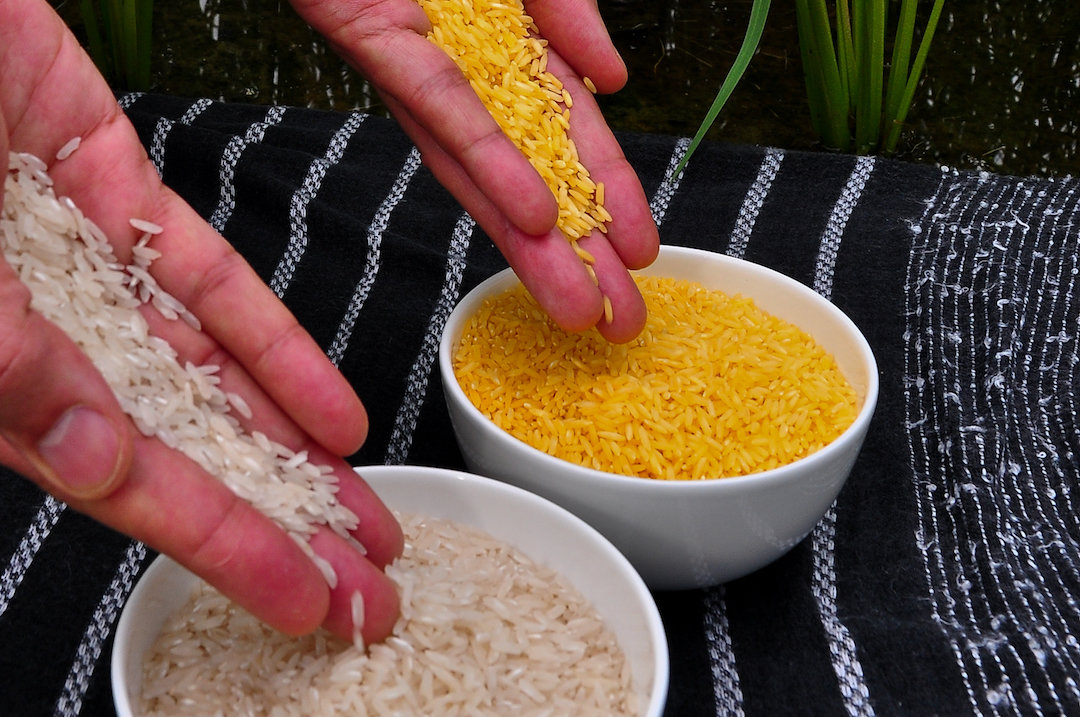Nutrient deficiency is another problem in developing countries that GMO corporations insist should be addressed with their products. One high-profile example is vitamin A deficiency, which especially affects the Global South, increasing risks of infection, disease and other ailments such as blindness.
Golden Rice was supposed to be the GMO industry's great solution.
In 2000, Time magazine trumpeted Golden Rice—a genetically modified crop commercially licensed by Syngenta—as a way to save the lives of millions of people in the Third World. The Bill and Melinda Gates Foundation, which strongly advocates for GM crops everywhere, has long supported Golden Rice by funding the International Rice Research Institute.
However, after 24 years of promises and propaganda campaigns against GMO critics, Golden Rice is turning out to be a dud. It is nowhere close to field introduction and is likely to fall short of its purported health benefits, according to a new study from Washington University in St. Louis.
Lead author Glenn Stone, a recognized expert in global agricultural trends and humanitarian issues, used to think we should give Golden Rice a chance. But a frank analysis of the situation now leads him to a different conclusion.
GMO researchers seek to increase the amount of beta carotene by inserting genes into existing rice strains, which they say will increase available vitamin A in the edible grain."Golden Rice was a promising idea backed by good intentions," Stone said. "In contrast to anti-GMO activists, I argued that it deserved a chance to succeed. But if we are actually interested in the welfare of poor children — instead of just fighting over GMOs — then we have to make unbiased assessments of possible solutions. The simple fact is that after 24 years of research and breeding, Golden Rice is still years away from being ready for release."
But they still have not been able to produce strains that yield as well as non-GM strains. Stone points out that Golden Rice "has not been successful in test plots of the rice breeding institutes in the Philippines, where the leading research is being done."
Little is known about how well the beta carotene will hold up in storage between harvests, or when cooked using traditional methods in remote rural areas. It is not even known whether the Golden Rice beta carotene can be converted to vitamin A in badly undernourished bodies.
Despite these realities, GMO proponents push hard for Golden Rice, and have suggested that critics are prolonging the misery of poor people with vitamin A deficiencies. Monsanto and their propaganda outlets like the GMO Literacy Project say that activists are responsible for the inability of Golden Rice to become a viable solution.
This too is debunked by the study.
"Golden Rice is still not ready for the market, but we find little support for the common claim that environmental activists are responsible for stalling its introduction. GMO opponents have not been the problem," said Stone.




Comment: Golden Rice has been called a 'Trojan horse', that will not only fail to stop malnutrition, but will expand the very destitution, poverty, and helplessness that causes malnutrition in the first place. Introducing this GE crop threatens biological diversity, puts corporate profits over food sovereignty, and would result in loss of livelihoods for small-scale farmers. Proponents of Golden Rice suggest rice farmers replace their profitable crops with genetically modified rice that will treat only one of many vitamin and mineral deficiencies they may or may not potentially suffer from, deficiencies that could be easily solved through other methods.